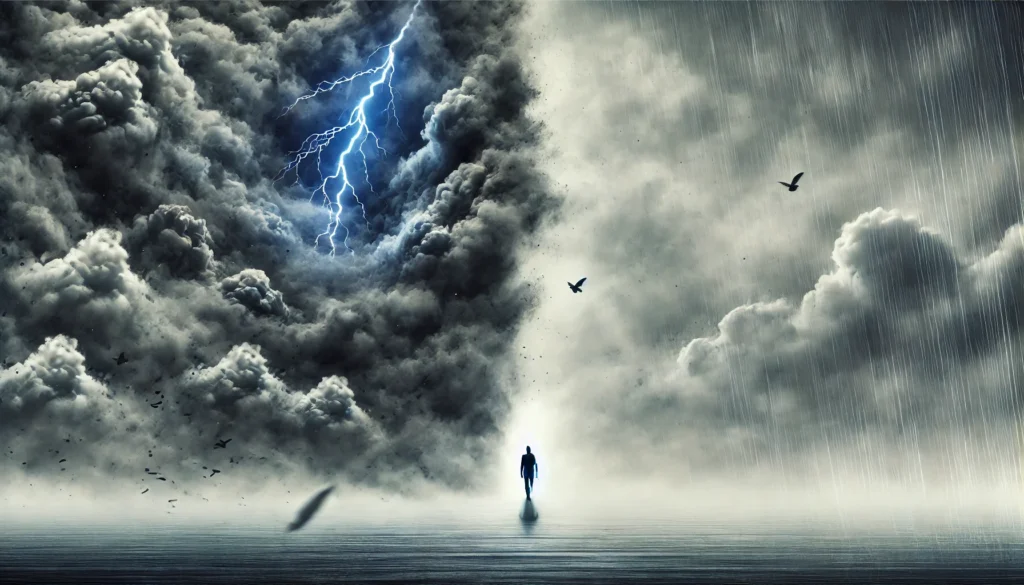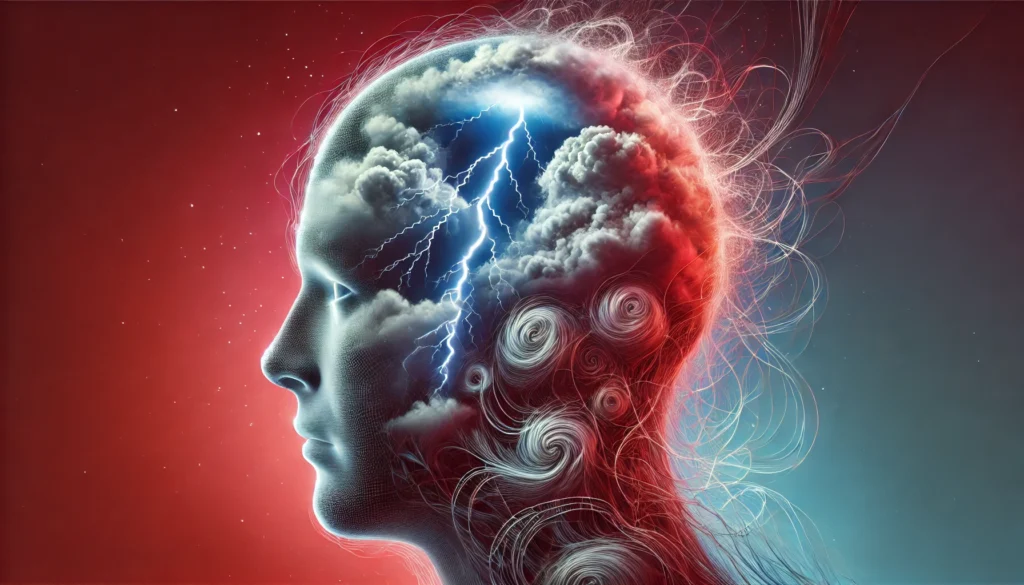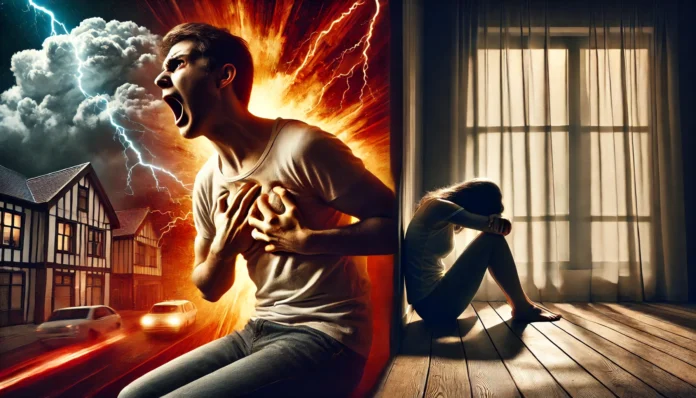Understanding the Distinction Between Panic and Anxiety Attacks
While anxiety and panic attacks are often used interchangeably in everyday conversation, the clinical reality paints a far more nuanced picture. The confusion between the two is understandable, especially given their overlapping symptoms. Yet, from a mental health perspective, distinguishing between a panic attack and an anxiety attack is not only important for diagnostic accuracy but also crucial for selecting the most effective treatment strategies. People experiencing either often describe intense psychological and physiological discomfort, but there are differences in the onset, duration, intensity, and triggers of each. Understanding these distinctions can empower individuals to seek the appropriate support and prevent unnecessary escalation of symptoms.
You may also like: Proven Relaxation Techniques for Stress and Anxiety: Evidence-Based Strategies to Calm Your Mind and Body
An anxiety attack tends to build gradually, often in response to specific stressors such as work pressure, relationship conflict, or anticipatory fear. In contrast, a panic attack typically strikes without warning and reaches its peak within minutes, overwhelming the person with fear or a sense of impending doom. While both can be deeply distressing, panic attacks are usually more acute, often mimicking life-threatening medical emergencies such as heart attacks. On the other hand, anxiety attacks are generally more persistent and linked to ongoing stress or worry. These differences inform not just how we categorize each episode, but how we intervene, manage, and ultimately help individuals regain a sense of control over their mental well-being.
Defining Panic Attacks: Characteristics and Diagnostic Criteria
A panic attack is defined by the Diagnostic and Statistical Manual of Mental Disorders, Fifth Edition (DSM-5), as an abrupt surge of intense fear or discomfort that reaches a peak within minutes. During this episode, individuals may experience a combination of physical and cognitive symptoms that are both alarming and disorienting. Common panic attack symptoms include chest pain, rapid heartbeat, shortness of breath, dizziness, sweating, trembling, chills, nausea, and a sense of detachment from reality. These sensations often lead individuals to believe they are having a heart attack or dying, prompting visits to the emergency room.
Unlike anxiety attacks, which are not formally recognized in the DSM-5, panic attacks have a clearer diagnostic framework. They can occur in the context of various anxiety disorders, including panic disorder, generalized anxiety disorder, and post-traumatic stress disorder, but can also appear independently. One distinguishing feature is the abruptness of the episode—panic attacks typically strike suddenly and without a clear trigger. This unpredictability can exacerbate anticipatory anxiety, leading to a cycle of fear about the next potential attack. For individuals with panic disorder, the fear of experiencing another attack can be as debilitating as the attacks themselves.
Furthermore, the physiological arousal during a panic attack is significantly heightened, activating the body’s fight-or-flight response in the absence of actual danger. This surge of adrenaline and cortisol contributes to the physical symptoms and reinforces the person’s belief that something catastrophic is happening. The intense nature of panic attacks makes early intervention critical, as repeated episodes can lead to behavioral changes such as avoidance of certain situations or places. In the long run, untreated panic attacks can contribute to agoraphobia, depression, and functional impairment.
Exploring Anxiety Attacks: Triggers, Duration, and Experience
Although not formally defined in the DSM-5, the term “anxiety attack” is widely used by mental health professionals and laypeople alike to describe episodes of heightened anxiety. Unlike panic attacks, which appear abruptly, anxiety attacks typically develop in response to perceived stressors or ongoing concerns. These episodes can be triggered by events such as looming deadlines, financial problems, or unresolved interpersonal conflicts. The symptoms often include excessive worry, muscle tension, fatigue, irritability, difficulty concentrating, and sleep disturbances. While they may be less intense than panic attacks, they tend to persist longer and can interfere with daily functioning.
One of the hallmark features of an anxiety attack is its gradual onset. Individuals often report feeling a growing sense of dread, accompanied by mounting worry and a sense of losing control. The emotional and cognitive symptoms are frequently accompanied by physical signs such as headaches, stomach discomfort, and increased heart rate. Unlike the acute and transient nature of a panic attack, an anxiety attack may last for hours or even days. This prolonged exposure to stress can wear down the body’s resilience and contribute to chronic health issues such as hypertension, gastrointestinal problems, and immune dysfunction.
What differentiates anxiety and anxiety attacks from everyday stress is the magnitude of the response and the degree to which it disrupts a person’s ability to function. While occasional anxiety is a normal part of life, especially in response to specific challenges, anxiety attacks represent a more intense and overwhelming experience. They can feel paralyzing, leaving individuals unable to carry out simple tasks or engage socially. Understanding the triggers and patterns of anxiety attacks can help individuals develop coping strategies and seek professional support before the symptoms become unmanageable. Addressing these episodes early can also prevent the development of more severe anxiety disorders over time.
Comparing Panic Attack vs Anxiety Attack Symptoms
One of the most critical aspects of understanding panic vs anxiety attacks lies in comparing their respective symptom profiles. While both involve an emotional and physiological reaction to perceived threat, their manifestations diverge in key ways. Panic attacks are usually characterized by a sudden onset of severe physical symptoms, such as chest tightness, racing heart, difficulty breathing, and an overwhelming sense of terror. These symptoms often lead individuals to believe they are experiencing a medical emergency, which reinforces the fear and prolongs the attack.
In contrast, anxiety attacks present more subtly and are often rooted in ongoing stress or worry. Common symptoms include persistent nervousness, muscle tension, restlessness, and difficulty concentrating. While some physical symptoms may overlap with those of a panic attack, such as an increased heart rate or sweating, the intensity is generally lower and builds gradually over time. Another distinguishing factor is the presence of intrusive thoughts, which are more prominent during anxiety attacks and often revolve around anticipated future events or worst-case scenarios.
The duration of symptoms is another key differentiator between a panic attack or anxiety attack. Panic attacks are typically short-lived, peaking within 10 to 15 minutes and then subsiding, although the aftereffects may linger for hours. Anxiety attacks, on the other hand, can persist much longer, often fluctuating in intensity throughout the day or over several days. This prolonged experience can be emotionally exhausting and make it more difficult for individuals to identify a clear endpoint or resolution. Recognizing these nuanced differences is essential.

How Do You Diagnose Anxiety and Related Conditions?
Diagnosing anxiety and related disorders, including identifying whether someone is experiencing an anxiety attack or panic attack, requires a comprehensive and individualized approach. Mental health professionals rely on clinical interviews, standardized assessment tools, and observation of behavioral patterns to arrive at an accurate diagnosis. The Diagnostic and Statistical Manual of Mental Disorders, Fifth Edition (DSM-5), serves as the primary framework for categorizing anxiety disorders, and although it does not formally recognize “anxiety attacks” as a distinct diagnosis, it provides criteria for generalized anxiety disorder (GAD), panic disorder, social anxiety disorder, and other related conditions.
The diagnostic process often begins with a detailed clinical history, where the individual is asked about the onset, frequency, duration, and intensity of their symptoms. A key part of differentiating between a panic attack or anxiety attack lies in identifying patterns and triggers. For example, a sudden surge of fear without a clear external stimulus may point toward a panic attack, especially if the person reports experiencing multiple symptoms that peak within minutes. In contrast, anxiety attacks are usually described as escalating feelings of distress in response to prolonged stressors, which may suggest generalized anxiety or a stress-related condition.
In addition to subjective self-reports, clinicians may use structured tools such as the Hamilton Anxiety Rating Scale (HAM-A), the Generalized Anxiety Disorder 7-item scale (GAD-7), or the Panic Disorder Severity Scale (PDSS). These instruments help quantify symptom severity and provide benchmarks for tracking progress over time. Physical evaluations are also important, as many panic attack symptoms—such as chest pain, palpitations, or shortness of breath—can mimic those of serious medical conditions like cardiovascular or respiratory illnesses. Ruling out underlying medical issues ensures that the focus remains appropriately on psychological treatment when warranted.
Furthermore, understanding what happens during an anxiety attack can help clinicians differentiate anxiety-related symptoms from other psychiatric or neurological issues. For instance, persistent worry, muscle tension, and sleep disruption may be indicative of generalized anxiety disorder, whereas intense fear of future attacks and avoidance of public spaces may signal the onset of panic disorder. An accurate diagnosis not only guides treatment decisions but also provides validation and clarity for individuals who may have been suffering in silence or misattributing their symptoms to physical ailments. This clarity is often the first step toward meaningful recovery.
The process of diagnosis is not merely a checklist of symptoms but a collaborative and evolving conversation between patient and provider. It is a careful unraveling of lived experiences, emotional responses, and physiological changes that together shape an individual’s mental health profile. By approaching the diagnostic process with empathy, expertise, and attention to detail, clinicians can ensure that individuals receive not only the correct diagnosis but also a tailored treatment plan that addresses both the root causes and the manifestations of their distress.
The Biology Behind Panic and Anxiety Attacks: What Science Reveals
To understand the difference between panic vs anxiety attack experiences, it is essential to explore the biological mechanisms that underlie each condition. Both types of attacks are driven by complex interactions between the brain, nervous system, and endocrine pathways. However, the immediacy and severity of a panic attack suggest a more acute activation of the body’s emergency response systems, while anxiety attacks are more closely linked with prolonged activation of stress-regulating circuits.
During a panic attack, the body’s sympathetic nervous system is rapidly triggered, often without warning. This results in a cascade of physiological changes: the release of stress hormones like adrenaline and cortisol, a rapid increase in heart rate and respiration, and heightened blood flow to the muscles. This “fight-or-flight” response is designed to prepare the body for immediate action in the face of danger, yet in panic attacks, this response is erroneously activated in the absence of an actual threat. Neuroimaging studies have identified heightened activity in the amygdala—the brain’s fear center—along with dysregulation in the prefrontal cortex, which normally helps modulate emotional reactions.
Anxiety attacks, in contrast, are associated with sustained overactivation of the hypothalamic-pituitary-adrenal (HPA) axis. This prolonged stress response can lead to chronic elevations in cortisol, which may impair immune function, disrupt sleep, and increase the risk of cardiovascular problems. While the fear response is less sudden and intense than during a panic attack, the ongoing physiological toll of anxiety attacks can be just as damaging over time. Researchers have also found differences in neurotransmitter activity, such as decreased GABA (gamma-aminobutyric acid) levels, which reduce the brain’s ability to calm itself during periods of stress.
The neurobiology of these conditions also helps explain why symptoms can be so distressing and difficult to control. For instance, many of the signs that someone is having a anxiety attack—such as racing thoughts, irritability, and muscle tightness—are the result of persistent neural activation that keeps the brain in a state of hypervigilance. This differs from the explosive nature of a panic attack, where the sudden flood of physiological arousal can feel like a complete loss of control. In both cases, the person is not merely reacting to their environment but is also being influenced by underlying brain chemistry that amplifies their emotional responses.
Understanding the biology behind these conditions can also reduce stigma and self-blame. Many individuals internalize their symptoms or assume that their inability to “just calm down” reflects personal weakness. However, recognizing that these responses are the result of neurochemical imbalances and brain circuitry disruptions can help frame them as legitimate medical issues deserving of treatment and support. Moreover, this biological insight forms the foundation for developing effective pharmacological and therapeutic interventions that target specific pathways involved in fear, stress, and emotional regulation.
Recognizing the Signs: When Is It a Panic Attack or Anxiety Attack?
Identifying whether a person is experiencing a panic attack or anxiety attack can be challenging, especially in the heat of the moment. However, a closer look at the signs that someone is having a anxiety attack versus a panic attack reveals important distinctions that can inform both immediate responses and long-term care strategies. While both types of attacks can involve intense emotional and physical distress, they differ in how they begin, unfold, and affect behavior.
Panic attacks often start abruptly and peak within minutes, presenting with symptoms such as chest pain, dizziness, a feeling of choking, and intense fear of dying or going crazy. These symptoms can be so severe that individuals frequently seek emergency medical care, convinced that they are experiencing a heart attack or other life-threatening event. The rapid escalation and sheer intensity of these episodes are hallmark features that help differentiate panic from anxiety-based experiences. It’s not uncommon for people who suffer from repeated panic attacks to avoid situations where they’ve previously had an episode, leading to patterns of social withdrawal and isolation.
On the other hand, the signs of an anxiety attack are typically more gradual and emotionally driven. Individuals may describe feeling overwhelmed, constantly worried, or unable to shut off their thoughts. The anxiety may be accompanied by physical discomforts such as headaches, gastrointestinal distress, or muscle tension. These symptoms often last longer than those of a panic attack and can fluctuate in intensity throughout the day. Because of their less dramatic nature, anxiety attacks may go unrecognized or be dismissed as everyday stress, even though they can be equally debilitating when they occur frequently or interfere with normal functioning.
Another key aspect in distinguishing between panic vs anxiety attack experiences is how they affect cognitive processes. During a panic attack, cognition may become impaired due to overwhelming physical sensations and fear responses. People might report feeling disconnected from reality or experiencing derealization and depersonalization. In anxiety attacks, cognitive symptoms are more likely to involve excessive rumination, catastrophic thinking, or an inability to focus. These differences in mental patterns are essential for clinicians and individuals alike in choosing appropriate therapeutic interventions.

Frequently Asked Questions: Panic Attack vs Anxiety Attack
1. Can diet and lifestyle choices influence whether you experience a panic attack or anxiety attack?
Yes, lifestyle factors—including diet, sleep, exercise, and substance use—can significantly impact whether someone is more likely to experience a panic attack or anxiety attack. Diets high in sugar and caffeine, for example, can exacerbate anxiety and trigger symptoms that mimic panic attack symptoms, such as rapid heartbeat and jitteriness. Similarly, alcohol and nicotine, while sometimes used as coping mechanisms, often worsen anxiety and may contribute to the unpredictability of panic episodes. Lack of sleep is another critical factor; chronic sleep deprivation disrupts the body’s stress response system, making both anxiety and anxiety attacks more frequent and intense. While lifestyle changes are not a cure-all, they are a powerful complementary strategy for managing symptoms and building long-term emotional resilience.
2. How do social environments shape the frequency of panic attacks or anxiety attacks?
The quality of one’s social environment can strongly influence the onset and intensity of panic vs anxiety attack episodes. High-conflict relationships, lack of emotional support, or exposure to environments that are psychologically unsafe can increase the likelihood of chronic stress, thereby heightening the risk of anxiety and anxiety attacks. On the flip side, strong interpersonal connections and emotionally supportive communities can act as buffers against both chronic anxiety and acute panic symptoms. Interestingly, some individuals experience panic attacks only in social settings, a phenomenon linked to social anxiety disorder. Understanding whether your anxiety is tied to interpersonal dynamics can help determine whether you’re facing a panic attack or anxiety attack and tailor treatment accordingly, such as through group therapy, social skills training, or relationship counseling.
3. Are panic attack vs anxiety attack symptoms different in children and adolescents?
Yes, the expression of panic attack vs anxiety attack symptoms can vary significantly in younger populations. Children might not have the language to articulate overwhelming fear or persistent worry, so symptoms may manifest as physical complaints like stomachaches, headaches, or fatigue. Teens may exhibit irritability, withdrawal, academic decline, or changes in eating and sleeping patterns instead of the more classic panic attack symptoms seen in adults. The distinction between panic attack or anxiety attack presentations is also more nuanced in youth, as developmental factors and hormonal changes can mask or intensify emotional responses. Early intervention with age-appropriate tools—such as child-centered cognitive-behavioral therapy or play therapy—can prevent symptoms from progressing into more entrenched anxiety disorders later in life.
4. How do cultural perceptions of mental health affect how we label panic attacks or anxiety attacks?
Cultural beliefs and norms play a major role in how individuals interpret and respond to symptoms of anxiety and anxiety attacks. In some cultures, psychological distress may be more likely to be expressed through physical symptoms, which can lead to misinterpretation of panic attack symptoms as purely medical issues. Additionally, stigma around mental health in certain communities can discourage individuals from acknowledging symptoms, leading them to minimize or ignore signs that someone is having a anxiety attack. This cultural lens often affects whether people seek help and how they describe their experiences to healthcare providers. Recognizing these cultural dynamics is essential in diagnosing and treating anxiety, particularly when distinguishing panic attack vs anxiety attack symptoms across diverse populations.
5. Can panic attacks evolve into anxiety attacks or vice versa?
While panic and anxiety attacks are distinct phenomena, there is often a fluid relationship between the two. For instance, someone who experiences frequent panic attacks may develop anticipatory anxiety between episodes, which can gradually evolve into persistent anxiety and anxiety attacks. Conversely, chronic anxiety may eventually escalate to a panic episode, especially when emotional distress reaches a threshold that overwhelms the nervous system. This interplay complicates the panic vs anxiety attack distinction and underscores the need for comprehensive mental health evaluations. Understanding what happens during an anxiety attack versus a panic attack can help clinicians tailor interventions that address both the acute and chronic elements of distress simultaneously.
6. What are some emerging therapies for managing anxiety and panic symptoms?
Recent advances in mental health treatment are offering promising new approaches to managing panic attack symptoms and chronic anxiety. Modalities such as Acceptance and Commitment Therapy (ACT) help individuals develop a new relationship with distressing thoughts, rather than trying to eliminate them. Eye Movement Desensitization and Reprocessing (EMDR), once primarily used for trauma, is also gaining traction for treating anxiety and anxiety attacks rooted in unresolved emotional memories. Furthermore, biofeedback and neurofeedback technologies allow individuals to track physiological signals and learn to regulate stress responses in real time. These innovative approaches add to the growing toolkit of evidence-based strategies that differentiate treatment options for panic attack or anxiety attack presentations.
7. How does gender influence the experience of panic vs anxiety attack episodes?
Gender can significantly influence both the prevalence and presentation of panic attack vs anxiety attack symptoms. Research consistently shows that women are more likely to experience both types of episodes, possibly due to hormonal fluctuations, social expectations, and caregiving roles that increase chronic stress. Men, on the other hand, may be less likely to report anxiety or panic symptoms due to stigma or cultural norms that discourage emotional expression. This can lead to underdiagnosis or mislabeling, particularly when men describe symptoms in physical rather than emotional terms. Understanding how gender affects the expression of anxiety and anxiety attacks can improve diagnostic sensitivity and promote more inclusive mental health care.
8. What are some overlooked signs that someone is having a anxiety attack?
Subtle behavioral changes can be important but often overlooked signs that someone is having a anxiety attack. For example, they may become unusually indecisive, obsess over minor details, or withdraw from conversations without explanation. Unlike panic attacks, where physical symptoms dominate, anxiety attacks may present through irritability, avoidance behaviors, or difficulty following through on tasks. These less visible signs can be misinterpreted as laziness, disinterest, or even rudeness. Recognizing these quieter indicators can lead to earlier interventions and prevent symptoms from escalating into more disruptive or debilitating anxiety conditions.
9. How do comorbid mental health conditions affect panic attack or anxiety attack experiences?
Comorbidity with other mental health disorders can significantly influence how panic attack or anxiety attack episodes manifest and respond to treatment. For example, individuals with depression may experience more intense and prolonged anxiety attacks, often accompanied by feelings of hopelessness or apathy. Those with bipolar disorder may have anxiety symptoms that fluctuate with mood episodes, complicating the identification of patterns. In cases of post-traumatic stress disorder (PTSD), panic attack symptoms may be triggered by trauma-related flashbacks, making treatment more complex. Recognizing these intersections is essential for creating integrated treatment plans that account for the full spectrum of an individual’s mental health needs.
10. When should you seek professional help for panic or anxiety symptoms?
While occasional anxiety is part of the human experience, persistent symptoms—whether they appear as panic attack symptoms or anxiety attacks—should not be ignored. If symptoms interfere with work, relationships, or self-care, or if you find yourself avoiding activities to prevent another panic attack or anxiety attack, it’s time to seek professional guidance. Many people delay treatment because they’re unsure whether their experience qualifies as a mental health issue, but early intervention leads to better outcomes. A mental health professional can help you understand what happens during an anxiety attack, evaluate the frequency and severity of episodes, and recommend appropriate therapies or medications. Importantly, seeking help is a sign of strength and self-awareness—not weakness—and can significantly improve long-term quality of life.

Early recognition of these signs—by both the person experiencing them and those around them—is vital. Friends, family members, and even coworkers can play a crucial role in identifying patterns and encouraging professional support. For instance, knowing how to recognize the signs that someone is having a anxiety attack can prompt timely reassurance, grounding techniques, or the recommendation to seek a mental health evaluation. Whether it’s a sudden surge of terror or a prolonged period of relentless worry, both types of episodes are legitimate mental health concerns that deserve compassionate, evidence-based care.
mental health awareness, stress response system, coping with fear, emotional regulation strategies, autonomic nervous system, cognitive behavioral therapy for anxiety, signs of emotional distress, trauma-informed care, fear-based disorders, psychological first aid, managing chronic stress, understanding mental health symptoms, nervous system overload, how to manage stress naturally, physiological symptoms of stress, acute stress reaction, emotional dysregulation, early intervention mental health, psychotherapy for anxiety, neurobiology of fear
Further Reading:
Do You Know the Difference Between Panic and Anxiety?
Panic Attack vs. Anxiety Attack: How They Differ
Panic Attack vs. Anxiety Attack: Key Differences
Disclaimer
The information contained in this article is provided for general informational purposes only and is not intended to serve as medical, legal, or professional advice. While Health11News strives to present accurate, up-to-date, and reliable content, no warranty or guarantee, expressed or implied, is made regarding the completeness, accuracy, or adequacy of the information provided. Readers are strongly advised to seek the guidance of a qualified healthcare provider or other relevant professionals before acting on any information contained in this article. Health11News, its authors, editors, and contributors expressly disclaim any liability for any damages, losses, or consequences arising directly or indirectly from the use, interpretation, or reliance on any information presented herein. The views and opinions expressed in this article are those of the author(s) and do not necessarily reflect the official policies or positions of Health11News.


